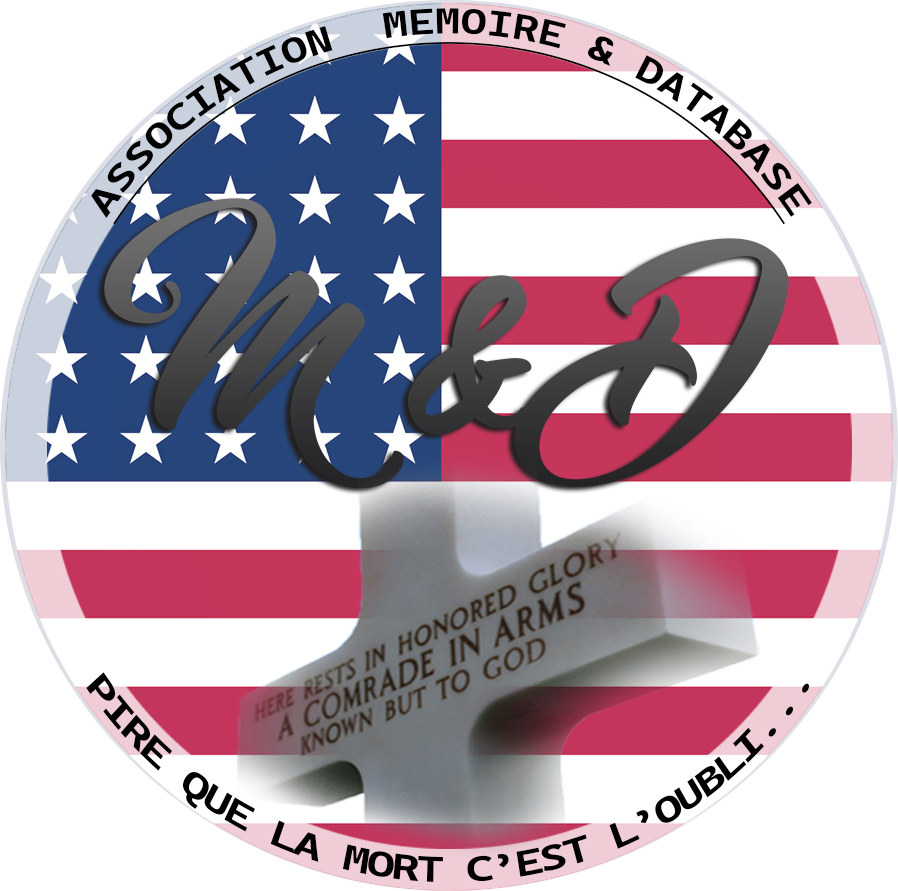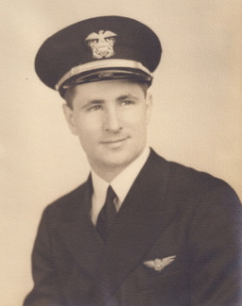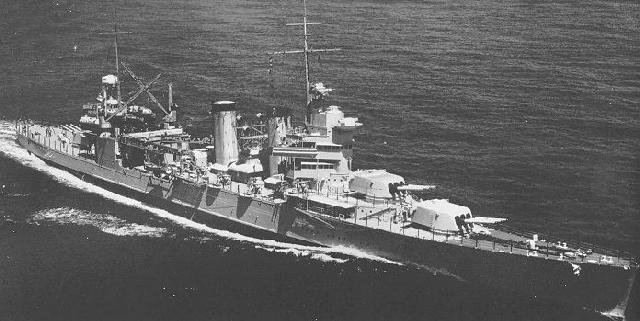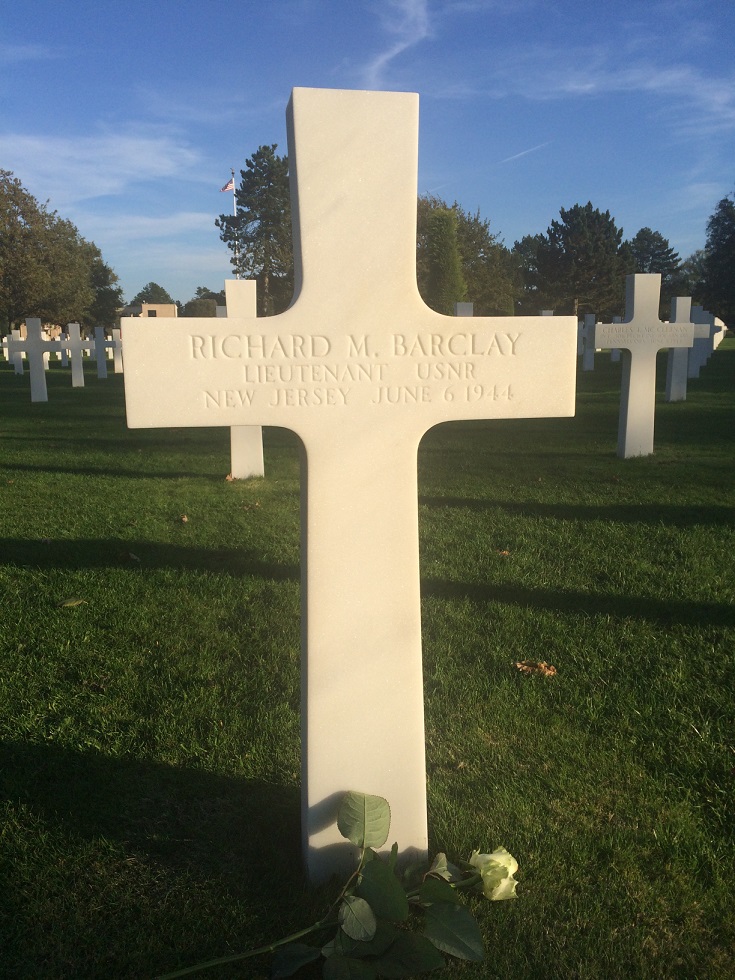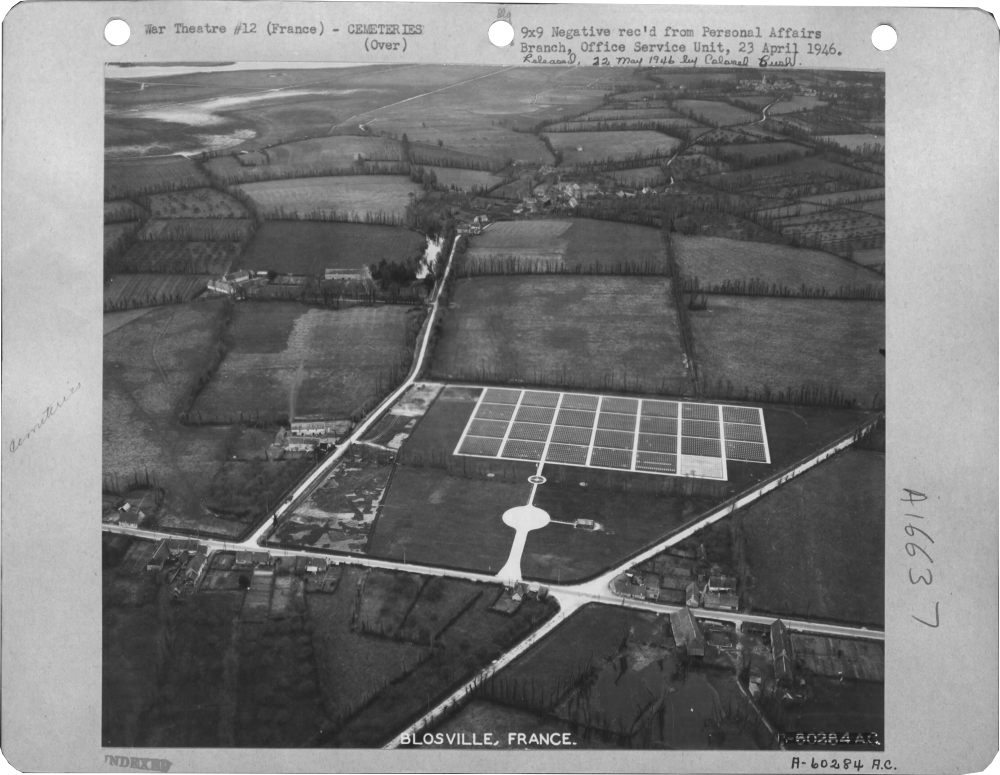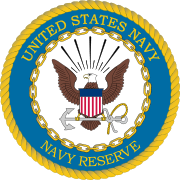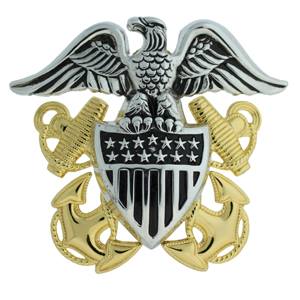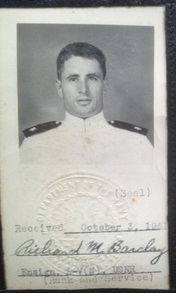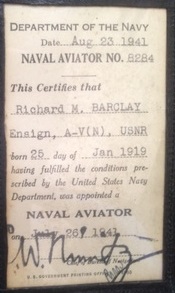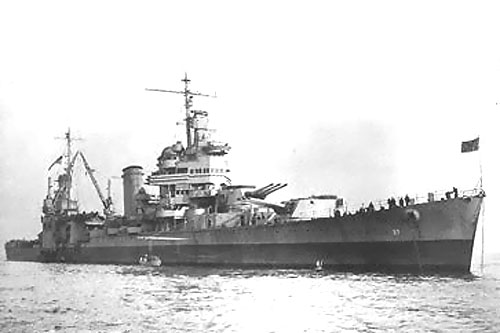|
Richard Miller BARCLAY
| |||||||
|---|---|---|---|---|---|---|---|
|
Source : Honor WWII
| |||||||
| NUMBER OF SERVICE | O-099931 | ||||||
| AGE | 25 yo | ||||||
| DATE OF BIRTH | 25 January 1919 Riverton, Burlington County | ||||||
| ENLISTMENT STATE | NEW JERSEY | ||||||
| FAMILY |
Spouse : Patricia Lundrigan Parents : Richard D. & Thérèse D. BARCLAY Siblings : Walter, Emily & Elizabeth | ||||||
| RANK | Lieutenant | ||||||
| FONCTION | Naval Aviator | ||||||
| JOB BEFORE ENLISTEMENT |  | ||||||
| DATE of ENLISTEMENT | December 1940 US Navals Air Corps | ||||||
| BOAT |
U.S.S. Tuscaloosa (CA-37)
| ||||||
| ARMY | United States Naval Reserve | ||||||
| DATE OF DEATH | 6 June 1944 |
Source : Frogman | |||||
| STATUS | KIA | ||||||
| PLACE OF DEATH | |||||||
| CEMETERY TEMPORARY |
CEMTERY TEMPORARY of BlosvilleN°3508
| ||||||
| CEMETERY | NORMANDY AMERICAN CEMETERY of Colleville | ||||||
| GRAVE |
| ||||||
| DECORATION |
| ||||||
| |||||||
| STORY | |||||||
|
In December of 1940, Richard chose to serve his country by enlisting in the U.S. Naval Air Corps. Soon, Richard was at the Naval Reserve Air Base in Brooklyn where he trained in elimination flight training for only successful pilot candidates continued to the next level. Not even a month later, on February 15, 1941, he was designated as an Aviation Cadet and was quickly transferred to the Jacksonville Air Station in Jacksonville, Florida. After a couple of years of dedication, Richard was appointed a Naval Aviator in July 1943. He was commissioned into the volunteer reserves and designated as senior aviator aboard the U.S.S. Tuscaloosa (CA-37) based on his exemplary completion of his aviation training. |
Source : 80861003.weebly.com | ||||||
|
Source : 80861003.weebly.com |
During WWII, Richard was assigned to be the Lieutenant of a Scouting Squadron aboard the U.S.S. Tuscaloosa, a cruiser out of Newport, R.I. The Tuscaloosa was built in Camden, NJ by the NY Shipbuilding Corporation. The Tuscaloosa was a heavy cruiser that could travel at 32 knots. It was commissioned on August 17, 1934 and was used to transport supplies to Russia and Great Britain. It was decommissioned on February 13, 1946 after many years serving the U.S. Navy in battle and was scrapped in 1959. However, during WWII, the Tuscaloosa participated in Neutrality Patrols around the Atlantic. Meanwhile, as D-Day approached, the pilots on the Tuscaloosa learned how to fly British aircrafts, the Supermarine Spitfires. These planes were faster, smaller, and easier to maneuver, which would allow them to have the advantage during battle. Later, in June 1944, the cruiser aided in the Normandy Invasion by bombarding the German positions at Utah Beach.
| ||||||
| SOURCE INFORMATION & SOURCE PHOTO | Abmc.gov - Findagrave.com - 80861003.weebly.com |
|---|---|
| PROGRAMMER | Henri, Garrett, Clive, Frédéric & Renaud |


